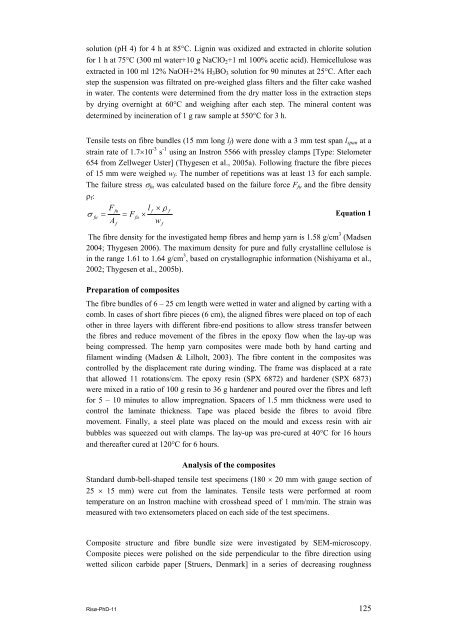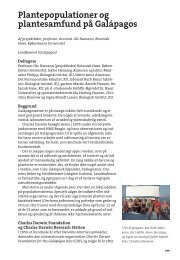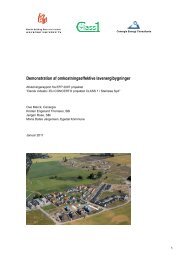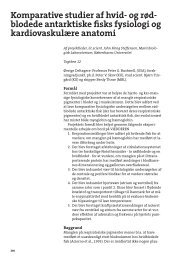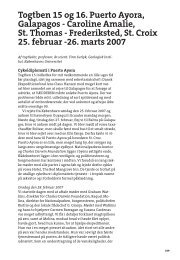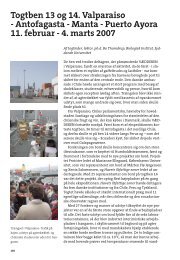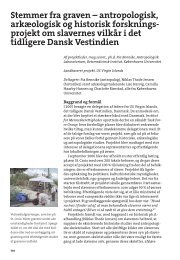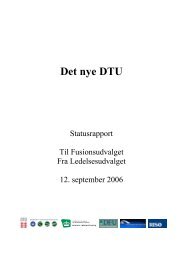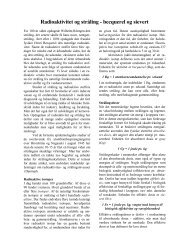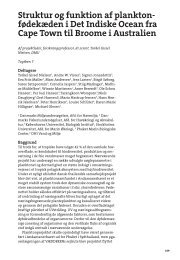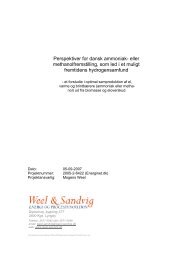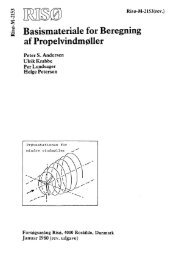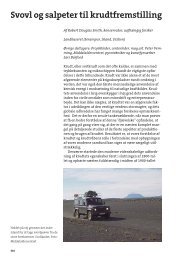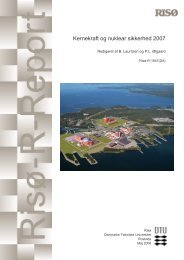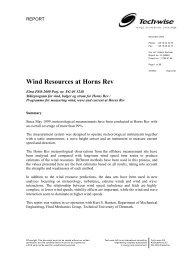Properties of hemp fibre polymer composites -An optimisation of ...
Properties of hemp fibre polymer composites -An optimisation of ...
Properties of hemp fibre polymer composites -An optimisation of ...
Create successful ePaper yourself
Turn your PDF publications into a flip-book with our unique Google optimized e-Paper software.
solution (pH 4) for 4 h at 85°C. Lignin was oxidized and extracted in chlorite solution<br />
for 1 h at 75°C (300 ml water+10 g NaClO2+1 ml 100% acetic acid). Hemicellulose was<br />
extracted in 100 ml 12% NaOH+2% H3BO3 solution for 90 minutes at 25°C. After each<br />
step the suspension was filtrated on pre-weighed glass filters and the filter cake washed<br />
in water. The contents were determined from the dry matter loss in the extraction steps<br />
by drying overnight at 60°C and weighing after each step. The mineral content was<br />
determined by incineration <strong>of</strong> 1 g raw sample at 550°C for 3 h.<br />
Tensile tests on <strong>fibre</strong> bundles (15 mm long lf) were done with a 3 mm test span lspan at a<br />
strain rate <strong>of</strong> 1.7×10 -3 s -1 using an Instron 5566 with pressley clamps [Type: Stelometer<br />
654 from Zellweger Uster] (Thygesen et al., 2005a). Following fracture the <strong>fibre</strong> pieces<br />
<strong>of</strong> 15 mm were weighed wf. The number <strong>of</strong> repetitions was at least 13 for each sample.<br />
The failure stress σfu was calculated based on the failure force Ffu and the <strong>fibre</strong> density<br />
ρf:<br />
σ<br />
F l × ρ<br />
fu<br />
f f<br />
fu = = Ffu<br />
×<br />
Equation 1<br />
Af<br />
w f<br />
The <strong>fibre</strong> density for the investigated <strong>hemp</strong> <strong>fibre</strong>s and <strong>hemp</strong> yarn is 1.58 g/cm 3 (Madsen<br />
2004; Thygesen 2006). The maximum density for pure and fully crystalline cellulose is<br />
in the range 1.61 to 1.64 g/cm 3 , based on crystallographic information (Nishiyama et al.,<br />
2002; Thygesen et al., 2005b).<br />
Preparation <strong>of</strong> <strong>composites</strong><br />
The <strong>fibre</strong> bundles <strong>of</strong> 6 – 25 cm length were wetted in water and aligned by carting with a<br />
comb. In cases <strong>of</strong> short <strong>fibre</strong> pieces (6 cm), the aligned <strong>fibre</strong>s were placed on top <strong>of</strong> each<br />
other in three layers with different <strong>fibre</strong>-end positions to allow stress transfer between<br />
the <strong>fibre</strong>s and reduce movement <strong>of</strong> the <strong>fibre</strong>s in the epoxy flow when the lay-up was<br />
being compressed. The <strong>hemp</strong> yarn <strong>composites</strong> were made both by hand carting and<br />
filament winding (Madsen & Lilholt, 2003). The <strong>fibre</strong> content in the <strong>composites</strong> was<br />
controlled by the displacement rate during winding. The frame was displaced at a rate<br />
that allowed 11 rotations/cm. The epoxy resin (SPX 6872) and hardener (SPX 6873)<br />
were mixed in a ratio <strong>of</strong> 100 g resin to 36 g hardener and poured over the <strong>fibre</strong>s and left<br />
for 5 – 10 minutes to allow impregnation. Spacers <strong>of</strong> 1.5 mm thickness were used to<br />
control the laminate thickness. Tape was placed beside the <strong>fibre</strong>s to avoid <strong>fibre</strong><br />
movement. Finally, a steel plate was placed on the mould and excess resin with air<br />
bubbles was squeezed out with clamps. The lay-up was pre-cured at 40°C for 16 hours<br />
and thereafter cured at 120°C for 6 hours.<br />
<strong>An</strong>alysis <strong>of</strong> the <strong>composites</strong><br />
Standard dumb-bell-shaped tensile test specimens (180 × 20 mm with gauge section <strong>of</strong><br />
25 × 15 mm) were cut from the laminates. Tensile tests were performed at room<br />
temperature on an Instron machine with crosshead speed <strong>of</strong> 1 mm/min. The strain was<br />
measured with two extensometers placed on each side <strong>of</strong> the test specimens.<br />
Composite structure and <strong>fibre</strong> bundle size were investigated by SEM-microscopy.<br />
Composite pieces were polished on the side perpendicular to the <strong>fibre</strong> direction using<br />
wetted silicon carbide paper [Struers, Denmark] in a series <strong>of</strong> decreasing roughness<br />
Risø-PhD-11 125


